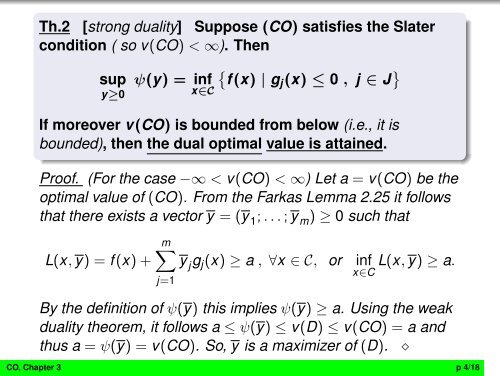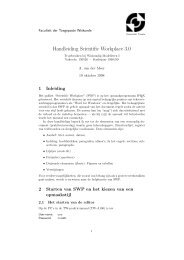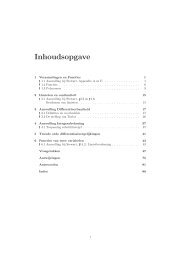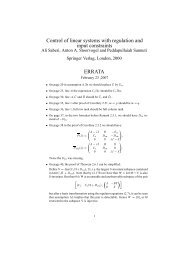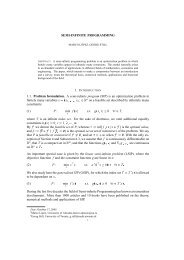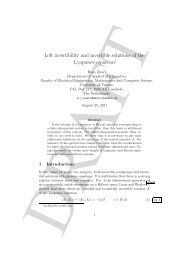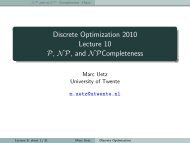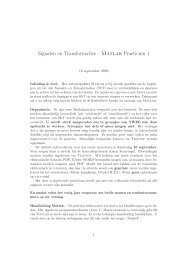Chapter 3. Duality in convex optimization
Chapter 3. Duality in convex optimization
Chapter 3. Duality in convex optimization
You also want an ePaper? Increase the reach of your titles
YUMPU automatically turns print PDFs into web optimized ePapers that Google loves.
Th.2 [strong duality] Suppose (CO) satisfies the Slater<br />
condition ( so v(CO) < ∞). Then<br />
sup<br />
y≥0<br />
{<br />
ψ(y) = <strong>in</strong>f f (x) | gj (x) ≤ 0 , j ∈ J }<br />
x∈C<br />
If moreover v(CO) is bounded from below (i.e., it is<br />
bounded), then the dual optimal value is atta<strong>in</strong>ed.<br />
Proof. (For the case −∞ < v(CO) < ∞) Let a = v(CO) be the<br />
optimal value of (CO). From the Farkas Lemma 2.25 it follows<br />
that there exists a vector y = (y 1 ; . . . ; y m ) ≥ 0 such that<br />
m∑<br />
L(x, y) = f (x) + y j g j (x) ≥ a , ∀x ∈ C, or<br />
j=1<br />
<strong>in</strong>f L(x, y) ≥ a.<br />
x∈C<br />
By the def<strong>in</strong>ition of ψ(y) this implies ψ(y) ≥ a. Us<strong>in</strong>g the weak<br />
duality theorem, it follows a ≤ ψ(y) ≤ v(D) ≤ v(CO) = a and<br />
thus a = ψ(y) = v(CO). So, y is a maximizer of (D). ⋄<br />
CO, <strong>Chapter</strong> 3 p 4/18


